
Learning about soil regeneration is learning about the generosity of the web of life. For years, we’ve lived in a system that treats the earth as deficient: an inert thing that demands man-made synthetic products in order to function — fertilizer to produce, pesticides to protect it from pests. Under this model, we’ve been destroying the earth’s true vocation of giving her gifts without expecting much in return.
Today, the agricultural industry is one of the activities that most transgresses the planetary boundaries, which determine the safe space so that the planet can continue to exist in a state of balance. Among them is the carbon cycle, for example, which has become destabilized, causing the climate change that we’ve heard so much about. However, there are other parameters that are in a much worse state, such as the nitrogen and phosphorus cycles, or the integrity of biodiversity.
Costa Rica is no exception. In our country, industrial agriculture represents one of the biggest environmental and health challenges, both due to the excessive use of agrochemicals as well as deforestation in order to extend monocultures.
The irony is that as agriculture degrades the environment, that degraded environment hinders agricultural production and ends up putting food security at risk. This has led many to claim that we need more land and fertilizers to produce more food, once again starting a seemingly unending vicious cycle.
However, in just 6 months, a community in Guanacaste has shown that there is another way of doing things. Through a community garden, the residents of Tempate have managed to harvest an abundance of healthy food free of agrochemicals while regenerating the soil’s health. Today, this small garden in Santa Cruz town is proof of the magic that emerges from mutual care.
***
The first time I visited Tempate’s garden was in January. The dry season was in full force, but the place was, without a doubt, a field of possibility. Organic matter had been added to the land a couple of months before and the community was getting ready to plant.
Most of the people who showed up to work were women, even though many of them had no previous experience working the land. To guide them in this task, there was Carmen Montes with all of his local wisdom and his love for gardening. The team from Costa Rica Regenerativa (CRR), an initiative by the University for International Cooperation (UCI- Universidad para la Cooperación Internacional), was also there to provide knowledge, guidance and the materials needed for the garden.
That day, Carmen was talking with Sio Guie, the director of CRR’s regenerative agriculture project, about what they were going to plant in the garden. Carmen suggested watermelons, already imagining the pleasure of biting into them: “Imagine being able to eat a watermelon here in this heat. That’s how you cool off!”
Months before, the families of Tempate couldn’t imagine the pleasure of eating a watermelon so easily. In the midst of the pandemic and the resulting unemployment in an economy dependent on tourism, the community had begun to depend on food donations to keep going. But it was clear that this wasn’t a long-term solution. It was then that CRR decided to turn the crisis into an opportunity and invited men and women in Tempate to form a community garden.
In the midst of the pandemic and the resulting unemployment in an economy dependent on tourism, the community had begun to require food donations to get by. But it was clear that this solution wasn’t sustainable. It was then that Costa Rica Regenerativa decided to turn the crisis into an opportunity and, with the support of the organisation CEPIA, invited Tempateños and Tempateñas to start a community garden.
The land that Roy Arias generously provided for the project was a pasture. Many people in the community didn’t think it was possible to grow anything on that degraded land.
A few weeks ago, they harvested a 12-kilo (26-pound) watermelon in the middle of the dry season. In addition to this, there are dozens of other crops that ensure a healthy variety for the community. The garden produces so much that, after distributing the fresh produce among the 30 families involved, they take the surplus to the Tamarindo market.
All of their products are 100% organic, grown through a multi-species collaboration: the earth, microorganisms, water, the sun, the moon, pollinizers and humans. Together, they all form a web of reciprocity and care that redesigns the experience of every organism in that small piece of land in Tempate.
***
Regenerated land is living land. Tiny microorganisms, which we can only imagine, are the first players needed. To welcome them, a feast of organic matter is needed, bringing carbon, nitrogen, phosphorus, potassium and a host of other nutrients and minerals into the soil. This helps the land regain its ability to bind carbon and retain water. In this way, the biological and chemical cycles of the earth begin to be reestablished. Under these conditions, the microorganisms are in charge of converting the nutrients to friendly forms for the plants, allowing them to take advantage of these resources. That’s why it’s important to restore the diversity of microorganisms in the soil.
Then, the diversity above ground is just as important. Regenerative agriculture uses methods of crop association, designing combinations of plants that care for and strengthen each other. There are many other nature-based solutions like these that help improve nutrients, increase crop success, retain moisture in the soil and, above all, reduce or eliminate the need for outside materials.
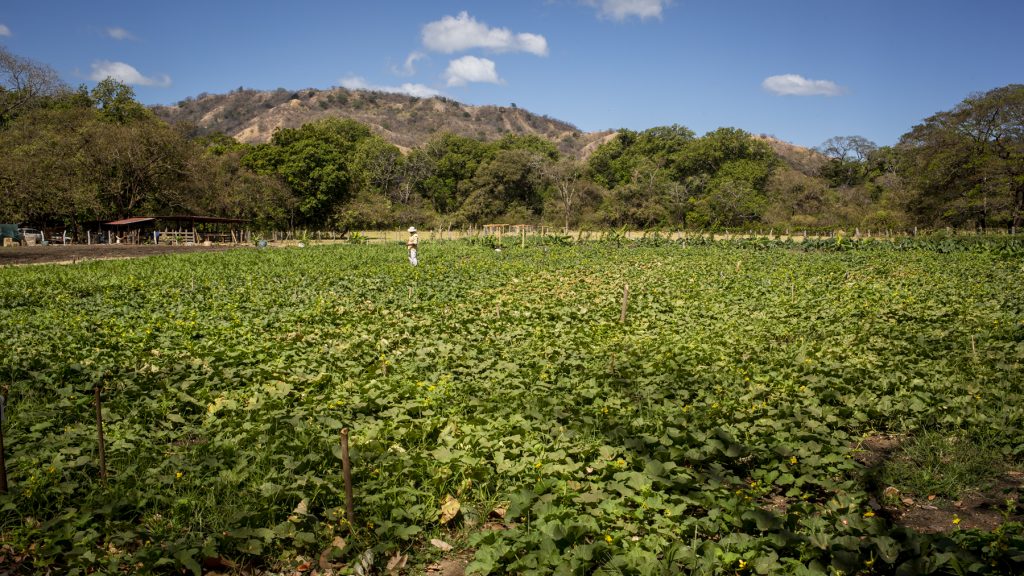
Carmen Montes supervises the regenerative garden of Tempate, where there was a pasture just 6 months ago. Credit: Alessandra BaltodanoPhoto: Alessandra Baltodano
The Tempate community’s work on this garden doesn’t result just in the local production of nutritious food. Regenerative agriculture brings with it all sorts of benefits: water retention, lowering the temperature around crops, capturing carbon in the soil, increasing biodiversity above and below ground, eliminating the use of fertilizers and pesticides, soil resilience to climate variation. The list goes on.
The regeneration of the planet begins with the ground. “We are earthlings,” the technical director of regenerative agriculture for CRR and dean of the UCI Faculty of Health Sciences (One Health), Felix Cañet, repeats vehemently. What we do and are depends on the land on which we live and work.
Our food systems urgently need to be transformed to guarantee food security and sovereignty, as well as to reverse the effects of climate change and return to a safe space within the planetary boundaries. The One Health perspective is: healthy soils, healthy food, healthy life, healthy planet. But a benefit that can perhaps be overlooked is the recovery of an emotional and spiritual relationship with the land and the communities where we live. Plants aren’t the only ones to put down roots.
***
Dani was born and raised in Tempate. He fondly remembers when as a “pup,” as he put it, his parents and relatives cultivated this same land where the garden is today. There was never a lack of corn or beans, he said.
But little by little, the lands were converted into pastures for livestock and non-native crops like sorghum. Sitting in the garden in Tempate, looking at the crops, Dani figured that nothing had been planted on this land for a decade and a half. He is amazed to see dozens of varieties of local crops growing in abundance now. He feels fortunate to be able to bring his daughters to the same land where he spent his childhood and to be able to teach them to grow their own food.
“These colleagues and institutions came to make a change in our daily lives and in the meals that we’re going to have. We won’t have to go to a supermarket to buy them. Now we harvest them again in our land, here in Tempate…. Our watermelon, our melon, cucumber, lettuce, squash. We have cassava and other types of medicinal plants…”
Leticia also grew up in Tempate. Her grandparents and parents also cultivated the land. Now in the garden, she has been recovering that knowledge that had dissipated through the generations. She said that she comes to the garden not just to plant, but also for a kind of therapy. “It has helped me a ton, because sometimes you leave the problems behind at home and here you come to distract yourself a lot. I’ve come here to de-stress a bit.”
Lorena, for her part, came to Tempate from Cartago almost 20 years ago. She raised her family here and became part of the community. In the garden she has found a place for her hyperactive son to socialize. She remarked that her son finds calm working in the garden, and so does she.
Sitting in the shade, enjoying refreshments together, the women of Tempate share worries and advice, while they also joke around. The breeze, the birds and their laughter are weaved together in an ecosystem that is recovering its fabric.
***
Costa Rica Regenerativa’s bet is holistic. Soil regeneration directly addresses the environmental challenges of our time, but it goes beyond environmental issues. Every regenerative action also touches upon five other pillars: social, cultural, political, economic and spiritual.
Working on regenerative gardens in Guanacaste is part of a larger ecosystem to transform food systems in the province. Felix sums it up as “regenerating the agricultural vocation” of the province, returning to the land. The vision takes into account local production and distribution systems that guarantee local resilience, food security and sovereignty, value chains of products and services around regenerative agriculture, the recovery of biodiversity, holistic livestock and a local education connected to its biological, geographical and cultural environment.
All of this depends on a local interweaving. Perhaps Ben Haggard, the founder of the Regenesis Group and a global leader in regenerative development, explained it best: “It is about reconnecting people’s inherent ability to live in a deep relationship with a place.”
As soils are regenerated, it’s also necessary to regenerate our sense of belonging and community. This is an element that is often absent in the discussion about climate change, but it is central to the transformation of our human role within the web of life.
Little by little, Tempate’s garden embodies a living example of that deep relationship that Haggard spoke of. Insects have returned (more than 80 species were recorded in a recent survey), the moon has a place in the planting calendar, microorganisms convert the soil into nutrients that are accessible for the entire food chain, the earth captures carbon and retains water, neighbors take care of each other and take care of the land. But above all, the men and women of Tempate have an ever growing conviction that the earth also takes care of them.
If there is one thing that everyone agrees on, it’s how appropriate the name they chose for their garden is: Tierra Mágica, Magic Land. Laughing, Dani remarked that even the experts at Costa Rica Regenerativa have been surprised by the harvests that have been achieved in the garden. He thinks that part of the reason is that the land is feeling the love that is being put into her and is returning that affection:
“Nature is wise. She is wise in the sense that she is showing us that we need to trust her already, and see that our land gives out everything: everything, everything, everything. It is something so, so, so wise that is there before our eyes, and that we have to learn to value…. She is feeling and she is showing us the love that she has for us.”
***
At the end of the afternoon when the work is done, calm falls upon Tempate’s garden. The wind whistles through the crops and the trees spread their branches with the breeze. The river falls on the earth one drop at a time. Soon the moon will come up. Soon the harvest will come.
In the midst of this vibrant sunset and in light of the land’s generosity, it’s possible to see beyond the climate crisis, the pandemic and the injustice to imagine a different harvest. Perhaps it is below the ground, where the portal to another possible world lies.
Credits:
- Videos, photography and text: Alessandra Baltodano – Wimblu
- Sound: Diego Ezpeleta
- Production and story editing: Alessandra Baltodano, Carolina Bello and Pablo Franceschi – Wimblu
- Acknowledgments: Community of Tempate and Costa Rica Regenerativa.
* Alessandra Baltodano is the co-founder of Wimblu and communications coordinator for Costa Rica Regenerativa.


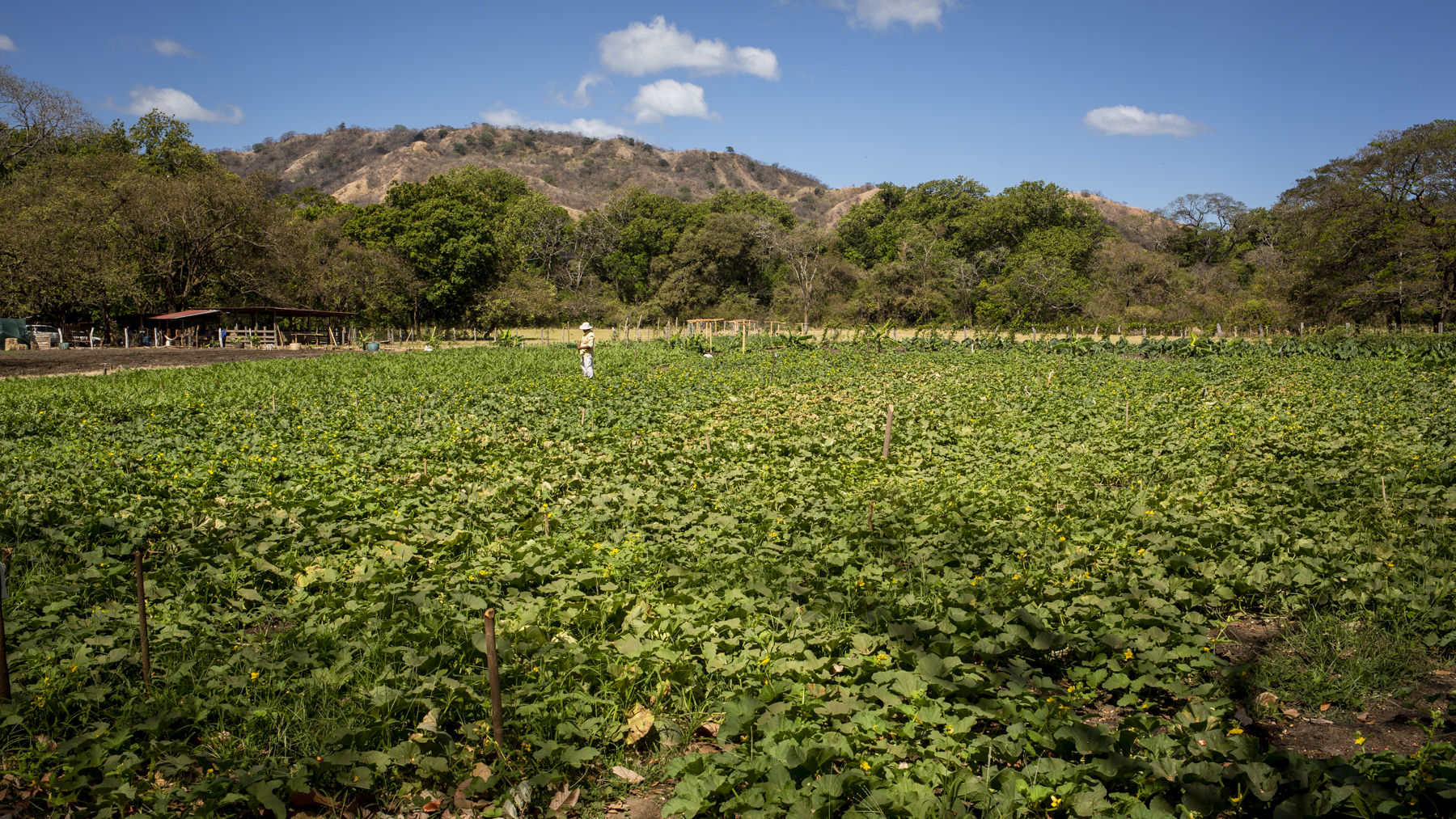
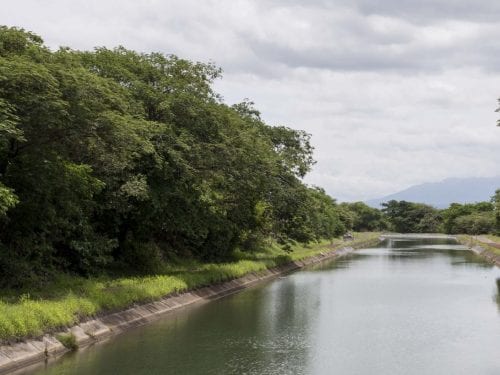
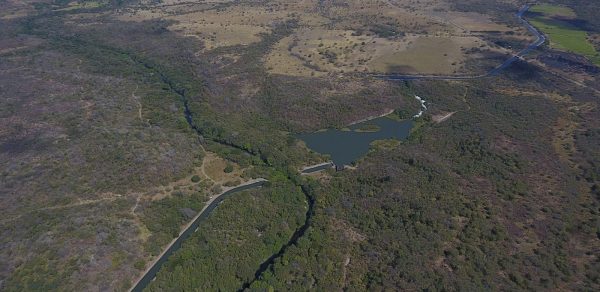
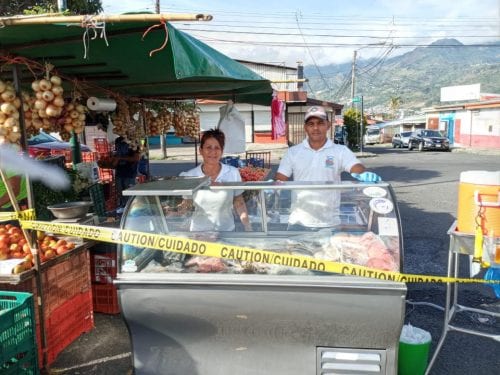

Comments